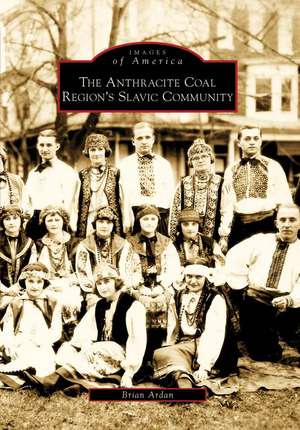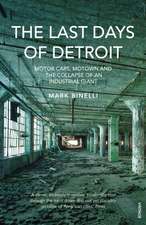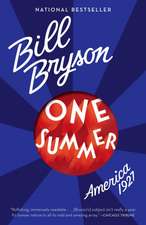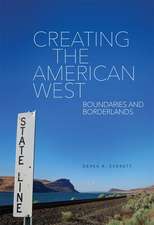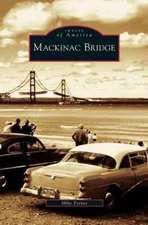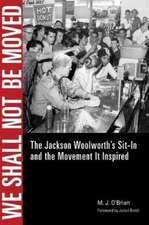The Anthracite Coal Region's Slavic Community: Images of America (Arcadia Publishing)
Autor Brian Ardanen Limba Engleză Paperback – 30 noi 2008
| Toate formatele și edițiile | Preț | Express |
|---|---|---|
| Paperback (1) | 136.28 lei 22-36 zile | |
| Arcadia Publishing (SC) – 30 noi 2008 | 136.28 lei 22-36 zile | |
| Hardback (1) | 181.89 lei 43-57 zile | |
| Arcadia Library Editions – 30 noi 2008 | 181.89 lei 43-57 zile |
Din seria Images of America (Arcadia Publishing)
-
 Preț: 133.17 lei
Preț: 133.17 lei -
 Preț: 133.00 lei
Preț: 133.00 lei -
 Preț: 131.94 lei
Preț: 131.94 lei -
 Preț: 133.00 lei
Preț: 133.00 lei -
 Preț: 133.00 lei
Preț: 133.00 lei -
 Preț: 127.20 lei
Preț: 127.20 lei -
 Preț: 127.39 lei
Preț: 127.39 lei -
 Preț: 132.35 lei
Preț: 132.35 lei -
 Preț: 173.20 lei
Preț: 173.20 lei -
 Preț: 117.50 lei
Preț: 117.50 lei -
 Preț: 132.54 lei
Preț: 132.54 lei -
 Preț: 118.13 lei
Preț: 118.13 lei -
 Preț: 133.17 lei
Preț: 133.17 lei -
 Preț: 131.94 lei
Preț: 131.94 lei -
 Preț: 128.26 lei
Preț: 128.26 lei -
 Preț: 133.00 lei
Preț: 133.00 lei -
 Preț: 133.17 lei
Preț: 133.17 lei -
 Preț: 133.00 lei
Preț: 133.00 lei -
 Preț: 131.94 lei
Preț: 131.94 lei -
 Preț: 133.41 lei
Preț: 133.41 lei -
 Preț: 127.20 lei
Preț: 127.20 lei -
 Preț: 131.94 lei
Preț: 131.94 lei -
 Preț: 120.40 lei
Preț: 120.40 lei -
 Preț: 131.72 lei
Preț: 131.72 lei -
 Preț: 127.20 lei
Preț: 127.20 lei -
 Preț: 131.94 lei
Preț: 131.94 lei -
 Preț: 132.76 lei
Preț: 132.76 lei -
 Preț: 131.94 lei
Preț: 131.94 lei -
 Preț: 127.39 lei
Preț: 127.39 lei -
 Preț: 133.17 lei
Preț: 133.17 lei -
 Preț: 133.00 lei
Preț: 133.00 lei -
 Preț: 133.41 lei
Preț: 133.41 lei -
 Preț: 117.72 lei
Preț: 117.72 lei -
 Preț: 133.17 lei
Preț: 133.17 lei -
 Preț: 117.72 lei
Preț: 117.72 lei -
 Preț: 133.00 lei
Preț: 133.00 lei -
 Preț: 128.26 lei
Preț: 128.26 lei -
 Preț: 132.13 lei
Preț: 132.13 lei -
 Preț: 132.13 lei
Preț: 132.13 lei -
 Preț: 131.94 lei
Preț: 131.94 lei -
 Preț: 131.94 lei
Preț: 131.94 lei -
 Preț: 133.41 lei
Preț: 133.41 lei -
 Preț: 133.41 lei
Preț: 133.41 lei -
 Preț: 131.94 lei
Preț: 131.94 lei -
 Preț: 118.31 lei
Preț: 118.31 lei -
 Preț: 127.61 lei
Preț: 127.61 lei -
 Preț: 131.94 lei
Preț: 131.94 lei -
 Preț: 131.94 lei
Preț: 131.94 lei -
 Preț: 133.41 lei
Preț: 133.41 lei
Preț: 136.28 lei
Nou
Puncte Express: 204
Preț estimativ în valută:
26.08€ • 27.30$ • 21.58£
26.08€ • 27.30$ • 21.58£
Carte disponibilă
Livrare economică 17-31 martie
Preluare comenzi: 021 569.72.76
Specificații
ISBN-13: 9780738562773
ISBN-10: 0738562777
Pagini: 127
Dimensiuni: 165 x 236 x 12 mm
Greutate: 0.39 kg
Editura: Arcadia Publishing (SC)
Seria Images of America (Arcadia Publishing)
ISBN-10: 0738562777
Pagini: 127
Dimensiuni: 165 x 236 x 12 mm
Greutate: 0.39 kg
Editura: Arcadia Publishing (SC)
Seria Images of America (Arcadia Publishing)
Descriere
Beginning in the latter half of the 19th century, individuals identifying themselves as Poles, Slovaks, Carpatho-Rusyns, Ukrainians, and others began what would eventually become a mass influx of eastern and central Europeans into Pennsylvania's anthracite coal mining region. These people brought with them languages and customs quite alien to the longer-established groups that had settled the area many years earlier. At times the Slavs clashed with these groups, as well as among themselves. Eventually, however, they wove their way of life indelibly into the multiethnic fabric of the growing region. The Anthracite Coal Region's Slavic Community presents a pictorial history of Slavic people in hard coal country, conveying the unique and rich culture brought to the area with the arrival of these diverse communities.
Recenzii
Title: A look at our ancestry
Author: Staff Writer
Publisher: The Daily Item
Date: 12/31/2008
A new book titled "The Anthracite Coal Region's Slavic Community" boasting more than 200 vintage photographs along with narrative from author Brian Ardan, of Trevorton, will be released Monday.
Ardan hopes the book "will be a touchstone of sorts for those interested in knowing about, and perhaps preserving, a culture that has had an enormously strong hand in shaping the character of hard coal cities and towns."
Ardan has lived and worked in Slavic-speaking counties, such as Poland, Bosnia and Montenegro. In his book, he examines Slavic culture as it relates to the anthracite coal region.
With master's degrees in Slavic studies and library and information science, Ardan currently serves on the faculty at Lock Haven University. He recently co-presented a paper in Prague, Czech Republic, dealing with internationalization efforts on small college campuses.
He is the faculty advisor to a newly-forming Slavics Club comprised mainly of students from Russia and Ukraine. He has also produced a musical CD with a well-known Slavic folk singer, Julia Doszna, from Poland.
Ardan hopes his book will inspire those in the region with Polish, Slovak, Ukrainian, Carpatho-Rusyn, Slovenian or other Slavic heritage to learn more about their culturally rich and historically significant roots.
Q: What was your inspiration for writing the book?
A: Since I was a child, I have always maintained an interest in Slavic roots and customs: why we ate the foods we did; the meanings behind those occasional foreign-language phrases passed down by ourgrandparents; why our customs during the holidays seemed different than those of many other children. For example, the Christmas Eve meatless meal, the passing around of the "oplatek" (wafers) and the accompanying well-wishing.
The customs and other cultural connections between Slavic culture overseas and those in the coal region were undeniable. I thus felt compelled to write a book that conveys a broad, yet pictorially vivid history of Slavs in the area.
Q. What will readers find interesting about the book?
A. I think that local people whose heritage includes Polish, Ukrainian, Slovak, Carpatho-Rusyn, Slovenian and other Slavic groups will be able to make connections between their own experiences in coal country with those of other Slavs in the region. The pictures will strike a chord with those who have heard family tales of the experiences of early immigrants and their first-generation descendents. They will also find it interesting to see photographs showing how Slavic culture is still alive and well in the region today.
Q. What lasting impact do you hope your book will leave?
A. As the older generations have begun moving on, coupled with the fact that the anthracite coal region has become increasingly diverse, the influence of Slavic culture steadily diminishes. I would therefore like the book to be a touchstone of sorts for those interested in knowing about, and perhaps preserving, a culture that has had an enormously strong hand in shaping the character of hard coal cities and towns.
Title: Trevorton native pens book on Slavic heritage
Author: Leslie Richardson
Publisher: The Republican Herald
Date: 1/11/2009
A coal region native has preserved the Slavic culture and traditions of the area in a recently released book titled aThe Anthracite Coal Regionsa Slavic Community.a
The book, written by Brian Ardan, formerly of Trevorton, is the latest in Arcadia Publishingas Images of America series.
The book presents a pictorial history of the Slavic people a those of Polish, Slovak, Ukrainian, Carpatho-Rusyn and Slovenian descent a in hard coal country.
aThe Slavic people had a very heavy culture at one time and you still see a lot of it in the coal region today, a Ardan said. aFor people with Slavic roots, the book is a nice way to provide more information on the stories they have heard and the traditions that family members may follow. It is a connection to the past and what you have today. For those not of Slavic descent, it is an introduction to the culture of these people that had a heavy presence in the region.a
Their stories convey the unique and rich culture the Slavic people brought to the area.
According to a press release, highlights of the book include a way for older readers of Slavic ancestry to experience a nostalgic look at events and organizations once widespread throughout the region; a way for younger readers to find an eye into the world of their forbearers, not only in the United States but also in Europe; and a way for readers interested in church history to find out about the establishment of Slavic churches and daily parish life.
Ardan, who is of Slavic heritage, has a keen interest inSlavic culture and has lived and worked in Slavic language-speaking countries. In this project, he examines Slavic culture as it relates to the anthracite coal region.
He has a masteras degree in Slavic studies and library and information science and is a faculty member of Lock Haven University.
Ardan recently co-presented a paper in Prague, Czech Republic, dealing with internationalization efforts on small college campuses. He is the faculty adviser to a newly formed Slavic Club, comprised mainly of students from Russia and Ukraine.
He also produced a musical CD with Julia Doszna, a well-known Slavic folk singer from Poland.
aSince I was a child, I have always maintained an interest in Slavic roots and customs, a Ardan said. aWhy we ate the foods we did, the meanings behind those occasional foreign-language phrases passed down by our grandparents, why our customs during the holidays seemed different than those of many other children.a
Ardan remembers the Christmas Eve meatless meals, the passing of the aoplateka wafers a unleavened wafers baked from pure wheat flour and water, embossed with Christmas related religious images a and the well wishing that went with it.
While studying Slavic culture and living in Slavic-language speaking countries, Ardan continued to feel a strong tie to the coal region.
aThe customs and other cultural connections between Slavic culture overseas and those in the coal region were undeniable, a Ardan said. aI felt compelled to write a book that conveys a broad, yet pictorially vivid history of Slavs in the area.a
Ardan said his masteras degree in Slavic studies helped with a basic knowledge of Slavicculture and customs.
aIt also provided me with an ability to assess documents found in the coal region that were written in various Slavic languages, including Polish, Slovak and Ukrainian, a Ardan said. aThe main research, however, came from trips throughout the area. I visited homes, historical societies, churches and other places in search of pictures that would help convey the story of Slavic immigrants and their descendents.a
Ardan also had the opportunity to attend an academic conference in Central Europe this past summer and visited a cultural center in Krakow, Poland. From there he established relations with an ethnographic museum that provided him with photos that are found in the first part of the book.
aI think local people whose heritage includes Polish, Ukrainian, Slovak, Carpatho-Rusyn, Slovenian and other Slavic groups will be able to make connections between their own experiences in coal country with those of other Slavs in the region, a Ardan said. aThe pictures will strike a chord with those who have heard family tales of the experience of early immigrants and their first-generation descendants.a
Ardan also said he believes people will find interesting photos showing how Slavic culture is still alive and well in the region today.
aAs the older generations have begun moving on, coupled with the fact that the anthracite coal region has become increasingly diverse, the influence of Slavic culture steadily diminishes, a Ardan said. aI would like the book to be a touchstone of sorts for those interested in knowing about, and perhaps preserving, a culture that has an enormously strong hand in shaping the character of hard coal cities andtowns.a
Ardan said he is hoping to begin a new project, digitizing documents of the Carpatho-Rusyn people that are stored in poor facilities in southern Poland.
aI am hoping to get a grant to travel to Poland in the summer and work for three weeks to a month, a Ardan said. aOnce the documents are digitized they will stay preserved and will be easier for people to access.a
Title: Book reveals history of local Slavic community
Author: Staff Writer
Publisher: The Dispatch
Date: 12/28/2008
The book boasts more than 200 vintage photographs along with a supportive narrative from local author Brian Ardan.
He has carefully selected rarely seen images from various private collections, churches, historical societies, and archives for the new book.
The Anthracite Coal Regionas Slavic Community presents a pictorial history of Slavic people in hard coal country, conveying the unique and rich culture brought to the area with the arrival of these diverse communities.
Author Brian Ardan hopes The Anthracite Coal Regionas Slavic Community awill be a touchstone of sorts for those interested in knowing about, and perhaps preserving, a culture that has had an enormously strong hand in shaping the character of hard coal cities and towns.a
Older readers of Slavic descent will experience a pleasant and nostalgic look at events and organizations once widespread in the region.
Younger readers will find the photographs to be an aeyea into the world of their forebears not only in the U.S., but also in far off eastern, central, and southern European locales.
The book does not limit itself to one particular Slavic group; Poles, Slovaks, Ukrainians, Ruthenians, and are highlighted.
Readers interested in church history will find two chapters about the establishment of Slavic churches in the region, as well as with parish daily life.
The book is available at area bookstores, independent retailers, and online retailers, or through Arcadia Publishing at (888)-313-2665 or www.arcadiapublishing.com.
BrianArdan is a faculty member in the Stevenson Library at Lock Haven University.
He has a masteras degree in Slavic studies from Indiana University and a masteras degree in library science from Clarion University.
He has lived in Slavic language-speaking countries, including Poland, Bosnia and Herzegovina, and Serbia and Montenegro.
Arcadia Publishing is the leading publisher of local and regional history in the United States.
The companyas mission is to make history accessible and meaningful through the publication of books on the heritage of Americaas people and places. Have we done a book on your town? Visit www.arcadiapublishing.com.
Author: Staff Writer
Publisher: The Daily Item
Date: 12/31/2008
A new book titled "The Anthracite Coal Region's Slavic Community" boasting more than 200 vintage photographs along with narrative from author Brian Ardan, of Trevorton, will be released Monday.
Ardan hopes the book "will be a touchstone of sorts for those interested in knowing about, and perhaps preserving, a culture that has had an enormously strong hand in shaping the character of hard coal cities and towns."
Ardan has lived and worked in Slavic-speaking counties, such as Poland, Bosnia and Montenegro. In his book, he examines Slavic culture as it relates to the anthracite coal region.
With master's degrees in Slavic studies and library and information science, Ardan currently serves on the faculty at Lock Haven University. He recently co-presented a paper in Prague, Czech Republic, dealing with internationalization efforts on small college campuses.
He is the faculty advisor to a newly-forming Slavics Club comprised mainly of students from Russia and Ukraine. He has also produced a musical CD with a well-known Slavic folk singer, Julia Doszna, from Poland.
Ardan hopes his book will inspire those in the region with Polish, Slovak, Ukrainian, Carpatho-Rusyn, Slovenian or other Slavic heritage to learn more about their culturally rich and historically significant roots.
Q: What was your inspiration for writing the book?
A: Since I was a child, I have always maintained an interest in Slavic roots and customs: why we ate the foods we did; the meanings behind those occasional foreign-language phrases passed down by ourgrandparents; why our customs during the holidays seemed different than those of many other children. For example, the Christmas Eve meatless meal, the passing around of the "oplatek" (wafers) and the accompanying well-wishing.
The customs and other cultural connections between Slavic culture overseas and those in the coal region were undeniable. I thus felt compelled to write a book that conveys a broad, yet pictorially vivid history of Slavs in the area.
Q. What will readers find interesting about the book?
A. I think that local people whose heritage includes Polish, Ukrainian, Slovak, Carpatho-Rusyn, Slovenian and other Slavic groups will be able to make connections between their own experiences in coal country with those of other Slavs in the region. The pictures will strike a chord with those who have heard family tales of the experiences of early immigrants and their first-generation descendents. They will also find it interesting to see photographs showing how Slavic culture is still alive and well in the region today.
Q. What lasting impact do you hope your book will leave?
A. As the older generations have begun moving on, coupled with the fact that the anthracite coal region has become increasingly diverse, the influence of Slavic culture steadily diminishes. I would therefore like the book to be a touchstone of sorts for those interested in knowing about, and perhaps preserving, a culture that has had an enormously strong hand in shaping the character of hard coal cities and towns.
Title: Trevorton native pens book on Slavic heritage
Author: Leslie Richardson
Publisher: The Republican Herald
Date: 1/11/2009
A coal region native has preserved the Slavic culture and traditions of the area in a recently released book titled aThe Anthracite Coal Regionsa Slavic Community.a
The book, written by Brian Ardan, formerly of Trevorton, is the latest in Arcadia Publishingas Images of America series.
The book presents a pictorial history of the Slavic people a those of Polish, Slovak, Ukrainian, Carpatho-Rusyn and Slovenian descent a in hard coal country.
aThe Slavic people had a very heavy culture at one time and you still see a lot of it in the coal region today, a Ardan said. aFor people with Slavic roots, the book is a nice way to provide more information on the stories they have heard and the traditions that family members may follow. It is a connection to the past and what you have today. For those not of Slavic descent, it is an introduction to the culture of these people that had a heavy presence in the region.a
Their stories convey the unique and rich culture the Slavic people brought to the area.
According to a press release, highlights of the book include a way for older readers of Slavic ancestry to experience a nostalgic look at events and organizations once widespread throughout the region; a way for younger readers to find an eye into the world of their forbearers, not only in the United States but also in Europe; and a way for readers interested in church history to find out about the establishment of Slavic churches and daily parish life.
Ardan, who is of Slavic heritage, has a keen interest inSlavic culture and has lived and worked in Slavic language-speaking countries. In this project, he examines Slavic culture as it relates to the anthracite coal region.
He has a masteras degree in Slavic studies and library and information science and is a faculty member of Lock Haven University.
Ardan recently co-presented a paper in Prague, Czech Republic, dealing with internationalization efforts on small college campuses. He is the faculty adviser to a newly formed Slavic Club, comprised mainly of students from Russia and Ukraine.
He also produced a musical CD with Julia Doszna, a well-known Slavic folk singer from Poland.
aSince I was a child, I have always maintained an interest in Slavic roots and customs, a Ardan said. aWhy we ate the foods we did, the meanings behind those occasional foreign-language phrases passed down by our grandparents, why our customs during the holidays seemed different than those of many other children.a
Ardan remembers the Christmas Eve meatless meals, the passing of the aoplateka wafers a unleavened wafers baked from pure wheat flour and water, embossed with Christmas related religious images a and the well wishing that went with it.
While studying Slavic culture and living in Slavic-language speaking countries, Ardan continued to feel a strong tie to the coal region.
aThe customs and other cultural connections between Slavic culture overseas and those in the coal region were undeniable, a Ardan said. aI felt compelled to write a book that conveys a broad, yet pictorially vivid history of Slavs in the area.a
Ardan said his masteras degree in Slavic studies helped with a basic knowledge of Slavicculture and customs.
aIt also provided me with an ability to assess documents found in the coal region that were written in various Slavic languages, including Polish, Slovak and Ukrainian, a Ardan said. aThe main research, however, came from trips throughout the area. I visited homes, historical societies, churches and other places in search of pictures that would help convey the story of Slavic immigrants and their descendents.a
Ardan also had the opportunity to attend an academic conference in Central Europe this past summer and visited a cultural center in Krakow, Poland. From there he established relations with an ethnographic museum that provided him with photos that are found in the first part of the book.
aI think local people whose heritage includes Polish, Ukrainian, Slovak, Carpatho-Rusyn, Slovenian and other Slavic groups will be able to make connections between their own experiences in coal country with those of other Slavs in the region, a Ardan said. aThe pictures will strike a chord with those who have heard family tales of the experience of early immigrants and their first-generation descendants.a
Ardan also said he believes people will find interesting photos showing how Slavic culture is still alive and well in the region today.
aAs the older generations have begun moving on, coupled with the fact that the anthracite coal region has become increasingly diverse, the influence of Slavic culture steadily diminishes, a Ardan said. aI would like the book to be a touchstone of sorts for those interested in knowing about, and perhaps preserving, a culture that has an enormously strong hand in shaping the character of hard coal cities andtowns.a
Ardan said he is hoping to begin a new project, digitizing documents of the Carpatho-Rusyn people that are stored in poor facilities in southern Poland.
aI am hoping to get a grant to travel to Poland in the summer and work for three weeks to a month, a Ardan said. aOnce the documents are digitized they will stay preserved and will be easier for people to access.a
Title: Book reveals history of local Slavic community
Author: Staff Writer
Publisher: The Dispatch
Date: 12/28/2008
The book boasts more than 200 vintage photographs along with a supportive narrative from local author Brian Ardan.
He has carefully selected rarely seen images from various private collections, churches, historical societies, and archives for the new book.
The Anthracite Coal Regionas Slavic Community presents a pictorial history of Slavic people in hard coal country, conveying the unique and rich culture brought to the area with the arrival of these diverse communities.
Author Brian Ardan hopes The Anthracite Coal Regionas Slavic Community awill be a touchstone of sorts for those interested in knowing about, and perhaps preserving, a culture that has had an enormously strong hand in shaping the character of hard coal cities and towns.a
Older readers of Slavic descent will experience a pleasant and nostalgic look at events and organizations once widespread in the region.
Younger readers will find the photographs to be an aeyea into the world of their forebears not only in the U.S., but also in far off eastern, central, and southern European locales.
The book does not limit itself to one particular Slavic group; Poles, Slovaks, Ukrainians, Ruthenians, and are highlighted.
Readers interested in church history will find two chapters about the establishment of Slavic churches in the region, as well as with parish daily life.
The book is available at area bookstores, independent retailers, and online retailers, or through Arcadia Publishing at (888)-313-2665 or www.arcadiapublishing.com.
BrianArdan is a faculty member in the Stevenson Library at Lock Haven University.
He has a masteras degree in Slavic studies from Indiana University and a masteras degree in library science from Clarion University.
He has lived in Slavic language-speaking countries, including Poland, Bosnia and Herzegovina, and Serbia and Montenegro.
Arcadia Publishing is the leading publisher of local and regional history in the United States.
The companyas mission is to make history accessible and meaningful through the publication of books on the heritage of Americaas people and places. Have we done a book on your town? Visit www.arcadiapublishing.com.
Notă biografică
Brian Ardan is a faculty member in the Stevenson Library at Lock Haven University. He has a master's degree in Slavic studies from Indiana University and a master's degree in library science from Clarion University. He has lived in Slavic language-speaking countries, including Poland, Bosnia and Herzegovina, and Serbia and Montenegro. He has carefully selected rarely seen vintage photographs from various private collections, churches, historical societies, and archives for this publication.
